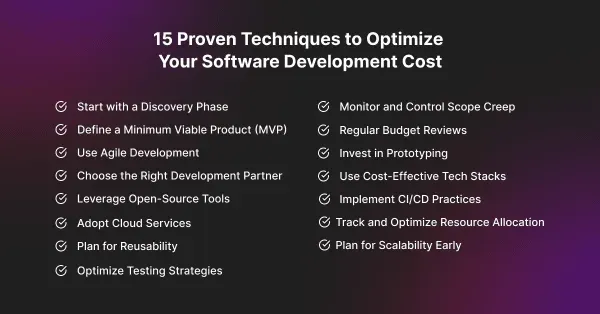Discovery and Planning (10–15%)
This is the foundation, where the project’s scope, goals, and timeline are clearly defined. Investing time here minimizes surprises later. Expect to allocate 10–15% of the budget for project managers and business analysts to create a robust project blueprint.
Design (10–15%)
Design typically accounts for another 10–15% of the total budget, depending on the complexity of the software. This phase often involves graphic designers, UX/UI experts, and front-end developers.
Development (40–50%)
This is where the core of the software is built, making it the most resource-intensive phase. Typically 40–50% of the budget, this stage involves coding, integrations, and creating functionality. Regular feedback cycles during development help manage costs and prevent unnecessary rework.
Testing and Quality Assurance (20–25%)
Testing and QA generally account for 20–25% of the budget. This involves QA specialists, testers, and sometimes automated testing tools to run various tests.
Deployment and Maintenance (10–20%)
Once live, the software requires ongoing maintenance and updates. This final 10–20% covers deployment and ensures the software continues to operate smoothly, adapting as needed for security and performance improvements.
Why Custom Software Development Cost Can Get Out of Hands
With a breakdown of costs in mind, it is clear why custom software projects can sometimes go over budget. Even with the best planning, surprises pop up along the way.
So, before jumping into solutions, let’s talk honestly about why software budgets tend to grow beyond what we expect. The more you are aware of these common challenges, the better prepared you will be to avoid them and keep your project running smoothly without breaking the bank.
Adding Extra Features
You start with a clear plan, but then someone suggests adding “just one more feature”… then another. Suddenly, the original project grows into a collection of add-ons, each bringing extra costs along for the ride.
Underestimated Complexity
Ever dive into a project only to find it is way trickier than expected? Happens all the time in software development. Maybe you hit a technical roadblock or run into an unexpected integration challenge, and suddenly, the hours (and costs) start adding up.
Tech Debt
Imagine building a house and cutting a few corners to save time. Those shortcuts eventually catch up. In software, skipping best practices early on (like proper code reviews or planning) leads to what we call “tech debt.” Fixing it later? Costly.
The good news? With a little planning, you can keep these budget breakers in check. So here are several lessons that companies typically learn the hard way—but with a bit of proactive thinking, you can avoid these challenges and keep your budget on track.









